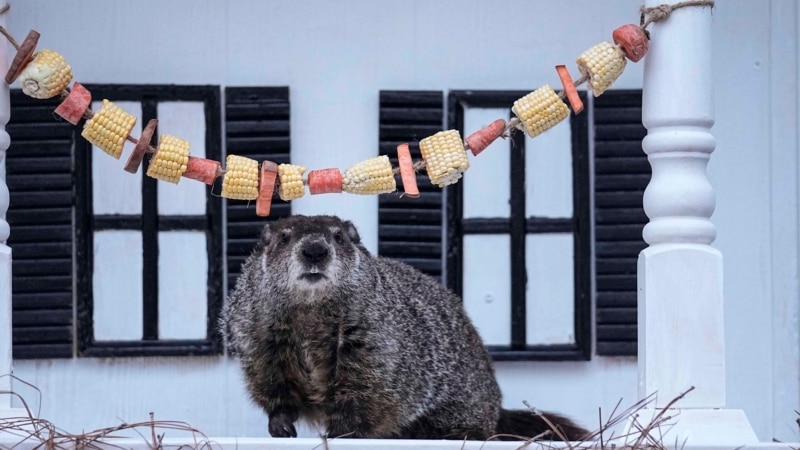Legendary U.S. groundhog Punxsutawney Phil failed to see his shadow Friday and predicted an early spring this year – or so say the local officials who put the animal through a tradition every February 2.
The annual observance of Groundhog Day brings thousands of revelers to the town of Punxsutawney, Pennsylvania each year. Local officials, dressed in top hats and formal long coats, make a show of removing the famous rodent from his burrow to get his “forecast.”
The event is held shortly after dawn, around 7:15am local time, but the festivities begin as early as 3:30 am with live entertainment and fireworks.
According to the organizer’s website, the tradition of seeking a weather forecast from a groundhog—a large rodent and member of the squirrel family—began in the town in 1886. Its origins go back to both Christian and pagan observances in Europe.
The pagan ritual marked the halfway point between the winter solstice and spring equinox. In Christian tradition, the feast day of Candlemas was when the church would distribute candles needed for the rest of winter and it evolved into a prediction for how much longer winter would last.
Historians say the Germans began the tradition of involving an animal to the prediction process, using a hedgehog, a small, spiny animal common in parts of Europe. Germans immigrating to the eastern United States, where there are no hedgehogs, kept up the tradition by turning to groundhogs.
While the tradition and the celebration that accompanies it has stood the test of time, the groundhog has not had a good track record of accurately predicting winter weather. The U.S. National Oceanic and Atmospheric Administration reports Punxsutawney Phil has been correct roughly 40% of the time over the last 10 years.
Some information for this report was provided by the Associated Press.

